Getting to know Venice is that much easier when your guide is a Venetian. Sara Scarpa takes us on a tour of the city she calls home…
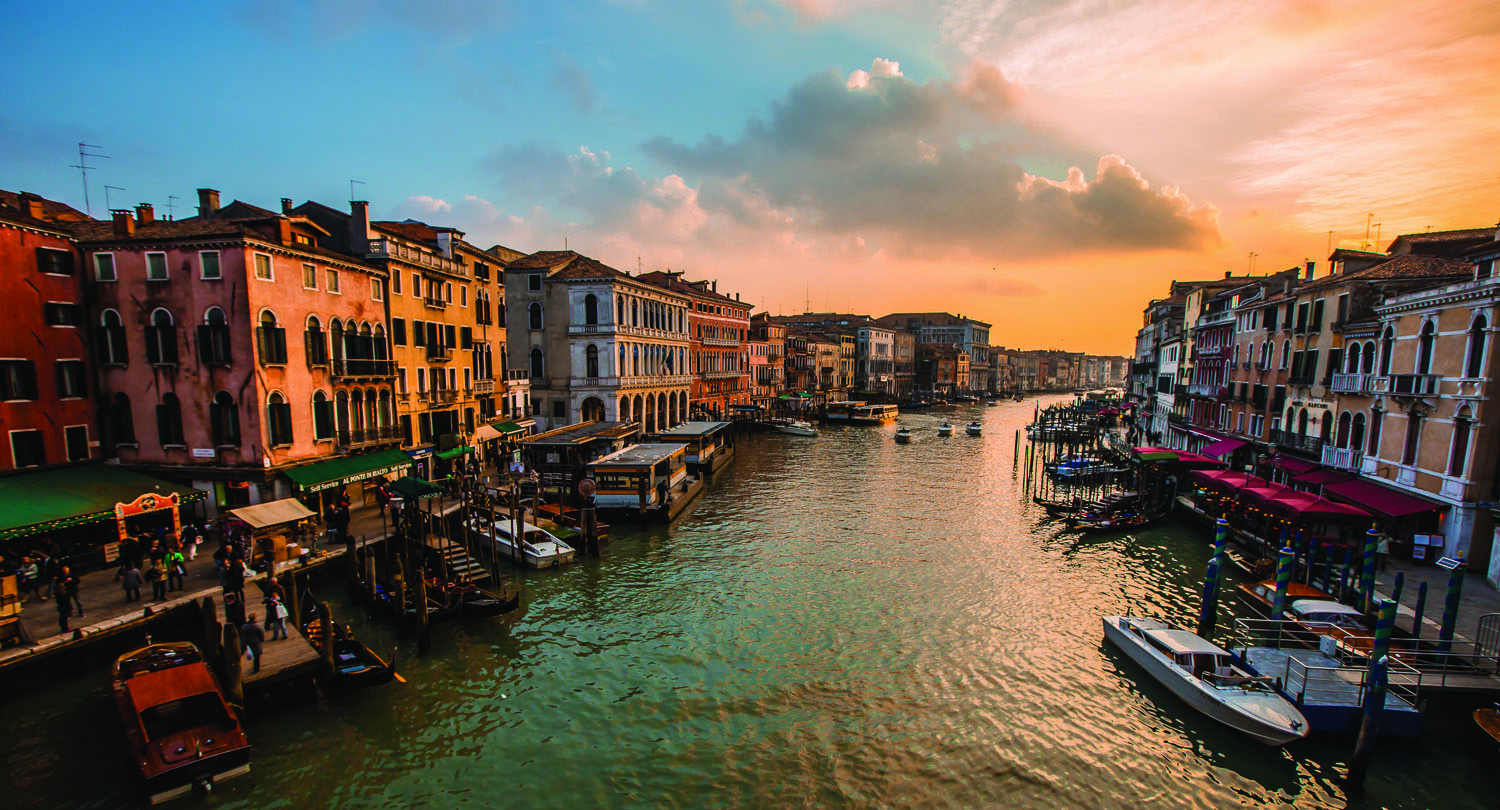
Most of my friends have already been to Venice at least once so when they come to visit me I show them the side of town that I got to know by growing up and living here throughout my childhood and right into my early adult life. I walk with them amongst those hidden alleys and courtyards that, in a frenzy to cover the postcard-stereotype-tourist-hotspots, most visitors miss out on…
Venice is a secret itself, right from its foundations. The surface hides millions of tree trunks under the water, which allow its existence. The city is rich with fascinating stories and legends. Venice, in its small, fish-shaped body swimming in water, has thousands of tiny calli and many other canals and bridges to discover. Set your map aside and get lost wandering through the tiny, dark and secret alleys, finding hidden campi, courtyards and gardens. Even now, even after so many years, even I sometimes discover some hidden gems that I have never seen before…
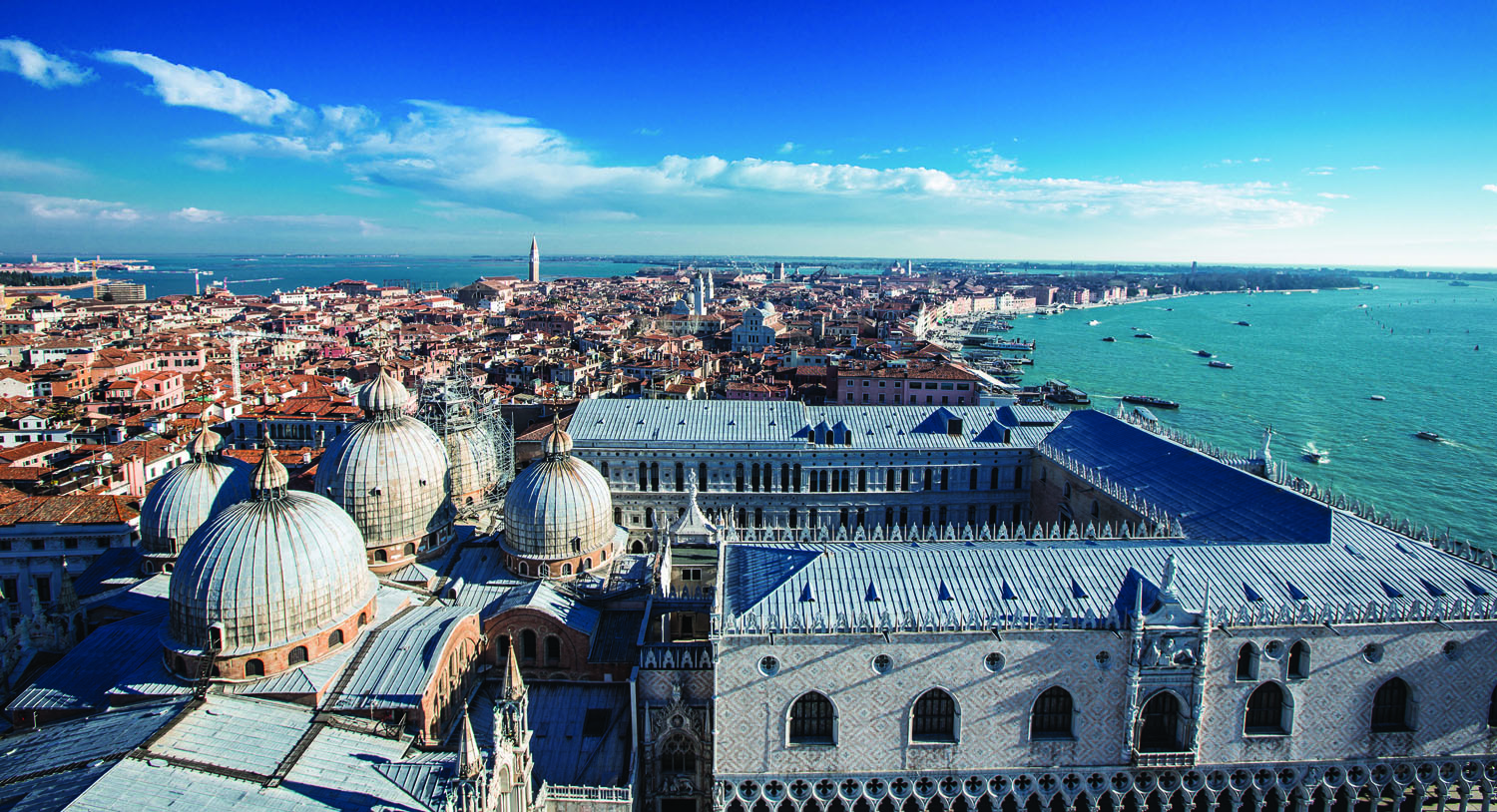
FIRST ITINERARY – THE ARSENALOTTI’S SECRETS AND THE MOST INTIMATE AREAS OF VENICE
Start your journey from the Arsenale stop and walk towards the grand entrance of the Venetian shipyard. Don’t worry about checking the map, from the Fondamenta you will immediately spot the high perimetric walls and the two iconic towers. The Porta Magna is guarded by four marble lions which were looted from Greece. The larger lion on the left was taken by Francesco Morosini from Piraeus, the ancient harbour of Athens, and if you look close enough you will discover on its body some runic characters in the shape of a lindworm.
If you look up high above the door you will notice another lion, this one winged, with a book open which is popularly believed to be a symbol of the time of peace for the Serenissima. Venice, as you have probably noticed, is full of lions, which are symbolic of Venice’s patron, St Mark the Evangelist, and therefore of Venice itself. Lion-spotting in Venice is a favourite activity of children – and also of mine!
Passing in front of these lions takes you back in time to the Serenissima. You can almost picture the 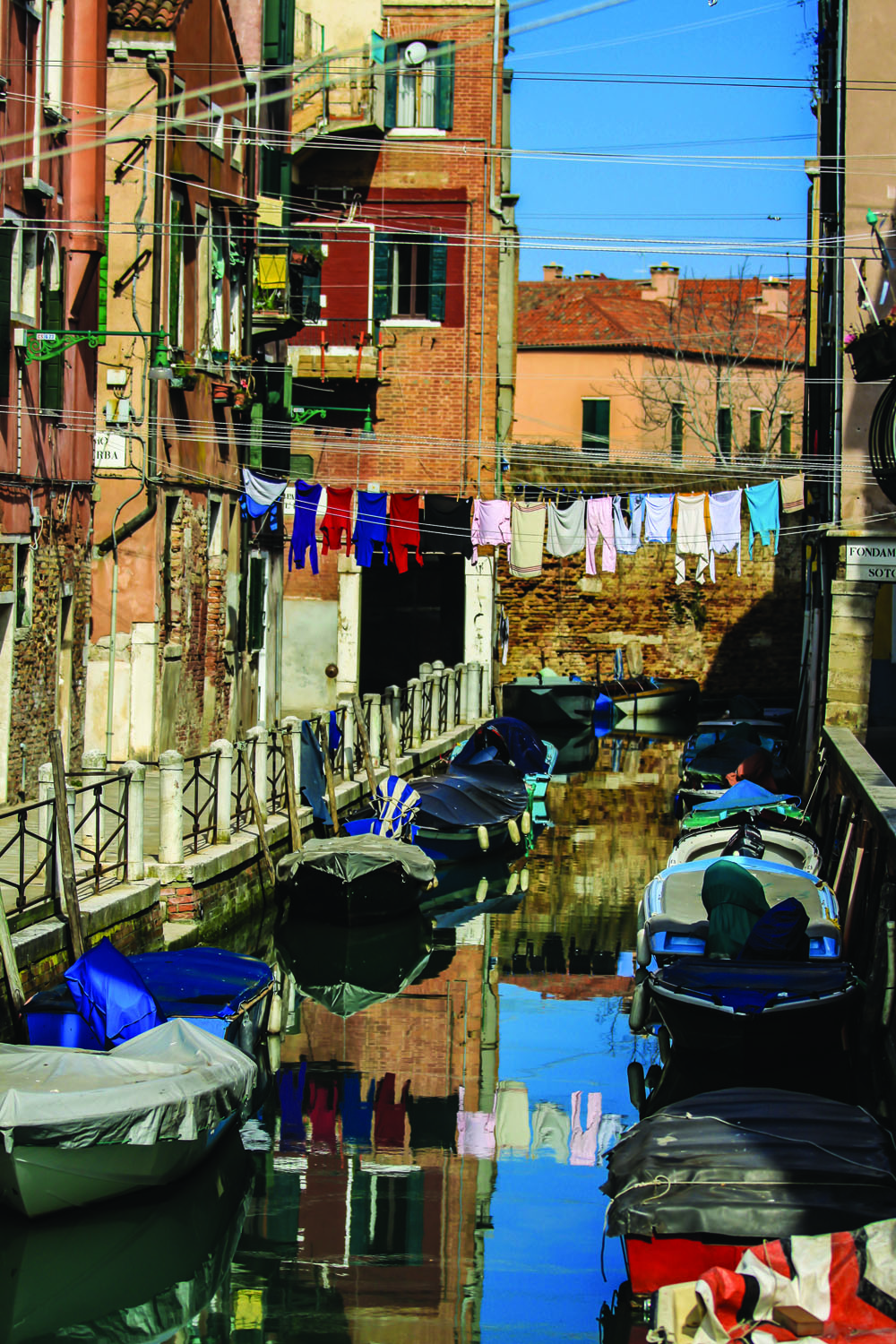 thousands of arsenalotti (the Arsenale workmen) working and living in this area apart from the rest of the city, handing down very precious, almost secret, knowledge from generation to generation. Thanks to the efficiency of the shipbuilding activities, the sailing skills and the organisation of the trading companies Venice had the supremacy of the sea. Its importance was so great that at the beginning of the 14th century it inspired verses in Dante’s Divina Commedia, and at the end of the 16th century it even involved Galileo as a consultant helping to solve shipbuilders’ problems.
thousands of arsenalotti (the Arsenale workmen) working and living in this area apart from the rest of the city, handing down very precious, almost secret, knowledge from generation to generation. Thanks to the efficiency of the shipbuilding activities, the sailing skills and the organisation of the trading companies Venice had the supremacy of the sea. Its importance was so great that at the beginning of the 14th century it inspired verses in Dante’s Divina Commedia, and at the end of the 16th century it even involved Galileo as a consultant helping to solve shipbuilders’ problems.
After stopping here to sit and have a drink or eat a pizza in front of this grand entrance (‘Trattoria Pizzeria Da Paolo’), cross the bridge again and walk back towards the Riva in the direction of Via Garibaldi. This is probably the most intimate residential part of Venice where you will find real Venetians. In terms of atmosphere, its London equivalent would probably be the feel of the East End. Here, you will find yourself away from the high traffic tourist areas and instead you will be attracted by the loud locals and their endless lines of laundry! Via Garibaldi is one of the few streets in Venice that is actually called Via (street). Before becoming the bustling local thoroughfare it is today, it was actually once a canal (as you can tell from the white stones that mark the borders). It takes its name from Giuseppe Garibaldi, who played a major role in the unification of Italy. This is quite rare in a city like Venice, where the public worship of famous personalities was generally banned and where most calli and squares take their names mainly from saints, professions, trades, or even just local people.
Walking here is just so relaxing. You should definitely stop at one of the bars for a spritz with a tramezzino (the English translation ‘sandwich’ does not do it any justice!). Towards the end of Via Garibaldi on the right hand side you will notice a shady, wide, tree-lined path with a monument to Garibaldi – the subject of an intriguing legend. If you keep walking straight on you will pass a very characteristic boat-docked vegetable market. Almost in front of it you will find a typical Venetian wine shop – bring your empty plastic bottles here and have them filled with wine for only a couple of euros!
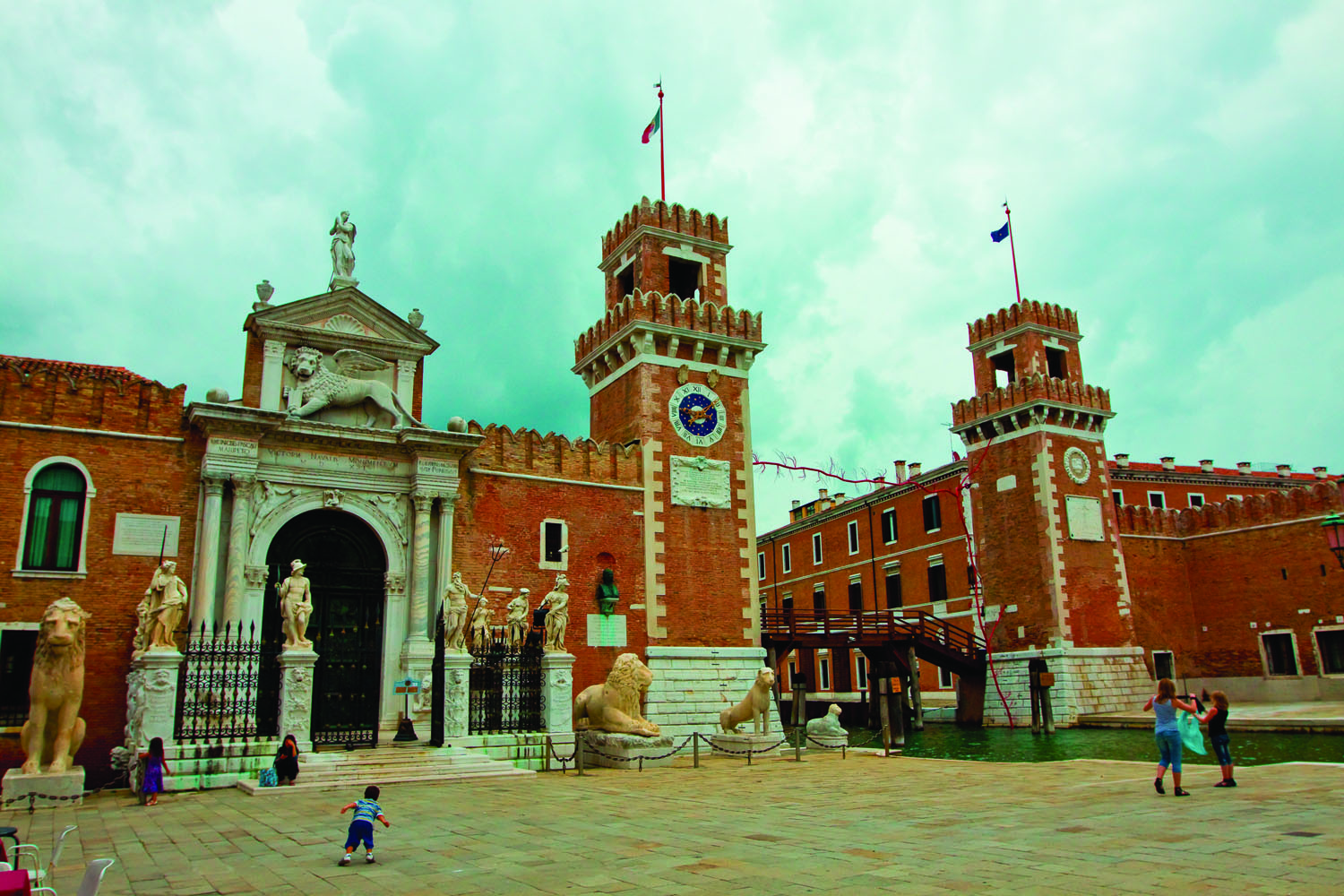
Continuing in this direction, on your right you will notice a pretty capitello, a tiny shrine with the image of the Madonna that has a religious function for the locals and that my grandmother regularly embellishes with a freshly-washed drape. Cross the long wooden bridge and turn left in the direction of San Pietro di Castello, a small sleepy island linked by two bridges to the main body of Venice. Just before reaching the church, on your right hand side you might enter Corte dei Preti, a small, colourful, pretty courtyard. Next to the church you will notice a stunning cloister with a 16th century wellhead which used to be part of the Patriarchal building until it was converted into a military station and then eventually into flats.
Finally, next to the monumental, ill-fated Campanile (the only bell tower completely clad in slabs of Istrian stone still standing in Venice), you will see the Basilica di San Pietro. It stands in one of the few campi in Venice that is still grassy (campo means ‘field’ in Italian). The Basilica is built on a partially Palladian design and was Venice’s Cathedral until, due to its peripheral location, it was completely overshadowed and substituted by St Mark’s Basilica. Inside, amongst many works of art by Luca Giordano, Pellegrini and Veronese, you will find an intriguing throne falsely believed to be the throne of the apostle St Peter. In fact it is actually a seat cut from a Muslim funeral stone with inscriptions from the Koran.
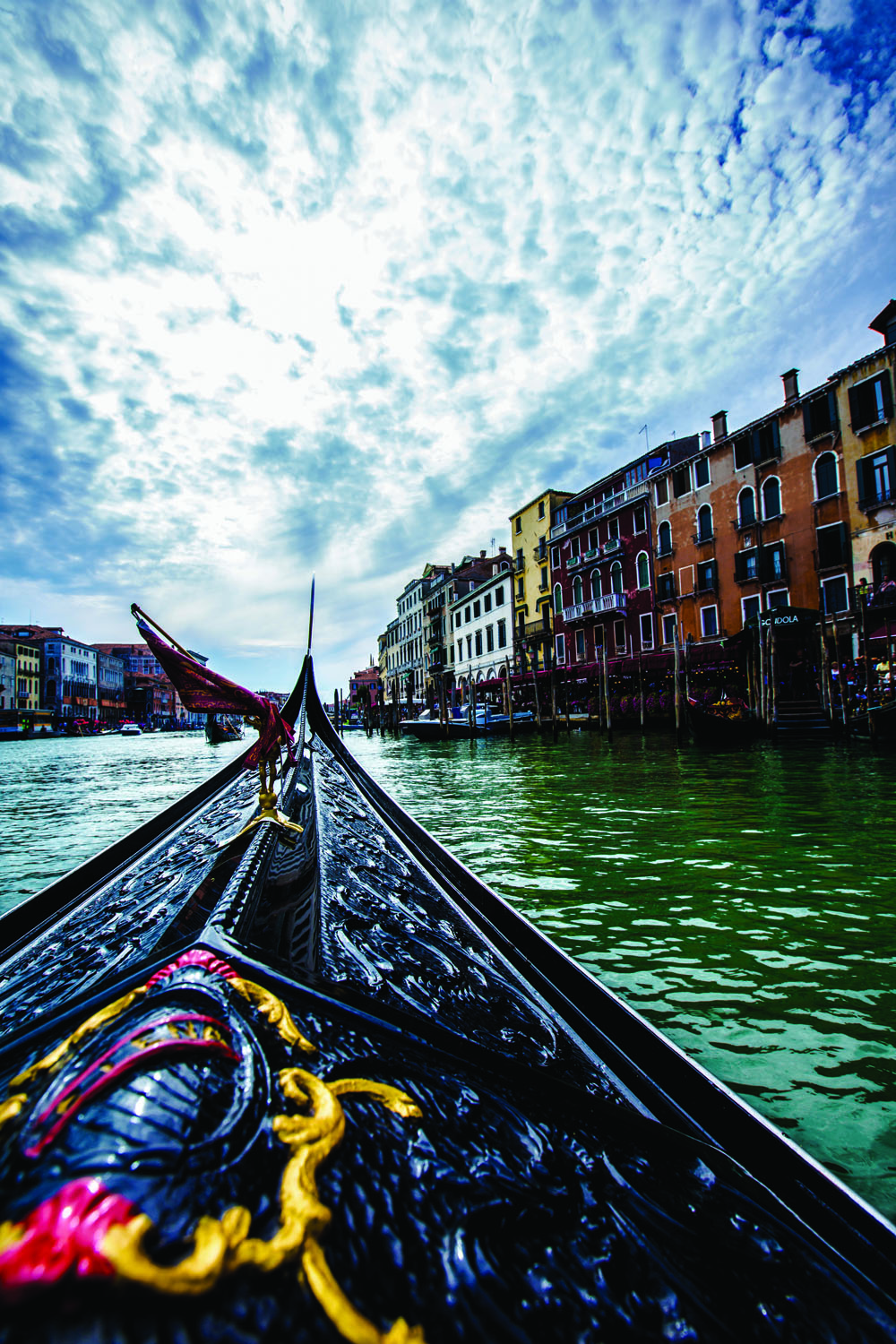 SECOND ITINERARY – FROM THE MERCENARY RIDING A HORSE TO THE GHOST OF THE TEMPLAR KNIGHT
SECOND ITINERARY – FROM THE MERCENARY RIDING A HORSE TO THE GHOST OF THE TEMPLAR KNIGHT
Get the vaporetto 5.1 or 5.2 (they cover the same route but in different directions). The boats circle the historic centre of Venice in the north lagoon and you will admire Venice from a different perspective. If you get the boat from the Lido you will see the back of the Basilica di San Pietro di Castello, the Certosa island and the perimetric walls of the Arsenale. Just before you get off at the Ospedale (hospital), you can spot the deep green cypresses contrasting with the pale red bricks of the walls that surround San Michele, a small island that has been serving Venice as a cemetery since the Austrian occupation, when burial in the historic centre of Venice was banned for sanitary reasons. It houses magnificent family chapels and graves, themselves works of art. You can see the graves of Igor Stravinsky and Ezra Pound among numerous other famous personalities buried here.
The boat stops on the Fondamente Nuove just in front of the only hospital in Venice (excluding the mainland). It has recently been restored and if you look up you will notice the new helipad for emergency calls. Continue on Fondamenta dei Mendicanti and on the opposite side of the canal you can admire one of the few squeri still existing in Venice, which you might recognise in paintings by Guardi and Canaletto. You will then arrive in Campo San Giovanni e Paolo just in front of the stunning main entrance to the Hospital. This was the home to one of the major scuole grandi (great schools) in Venice until, during Napoleon’s reign, it became a military hospital and later a civic hospital, as it is to this day. Enter the monumental columned hall and visit the Museum of the History of Medicine, which has just been recently restored. The Basilica di San Giovanni and Paolo, just next to it, is definitely worth a visit as it is rich with works of art and it is a sort of mausoleum with 25 Doges buried here. The middle of the square, (one of the biggest in Venice) is dominated by the equestrian statue of Bartolomeo Colleoni. He was one of Venice’s most loyal mercenary soldiers and it is believed that on his death in 1474 he left Venice a considerable amount of ducats on condition that the city would erect a statue of himself in front of St Mark’s. However, since Venice, as we already know, banned the public worship of famous personalities – and not even the Doge of Venice would get such privilege, with a clever ploy his statue was erected in front of St Mark’s Scuola Grande instead…
Only a couple of minutes away you will find a favourite for most brides, the Chiesa dei Miracoli (Miracles Church), a ‘jewel box’ decorated with different shades of marble, both inside and out, which is one of the greatest early Renaissance Venetian structures.

You can now rest on one of the benches of the Campo Santa Maria Nova (just on the opposite side of the canal), which is one of the few squares, (together with the mentioned Campo in San Pietro di Castello) where some trees are still standing. The church on the opposite side of the Campo is San Canzian, where Casanova used to smuggle love letters to a nun…
Keep walking on Salizada San Canzian towards San Giovanni Grisostomo. If you want to have a great view with a different perspective of the Canal Grande turn right to Campiello del Remer. This beautiful hidden courtyard with arcades and a well has a dock onto the Canal Grande, which most locals use as a resting spot to drink a spritz. The ‘Taverna Al Remer’ offers a great happy hour deal – a buffet of different cicchetti to choose from that comes free with your drinks. Nearby is the place where Marco Polo’s houses stood, which is now the Malibran Theatre. The houses were destroyed by a terrible fire in 1597 and there are only a few Venetian-Byzantine architectural remains surviving in the nearby Corte Seconda del Milion. If you walk under the stunning Portico that Marco Polo himself must have admired at the time, and walk along the narrow calle you will find Corte Morosini. This is a little hidden gem with stunning arcades and an old wellhead. It is the perfect setting for the legend of the Templar Knight, a sad story of love and betrayal… Take time to stop in this Corte and read up about the legend. Admire the shield on the patera above the arched entrance to the courtyard and also on the side of the well. In this magical atmosphere, away from the bustle, it will be easy to imagine the ghost of the knight still wandering in the area…
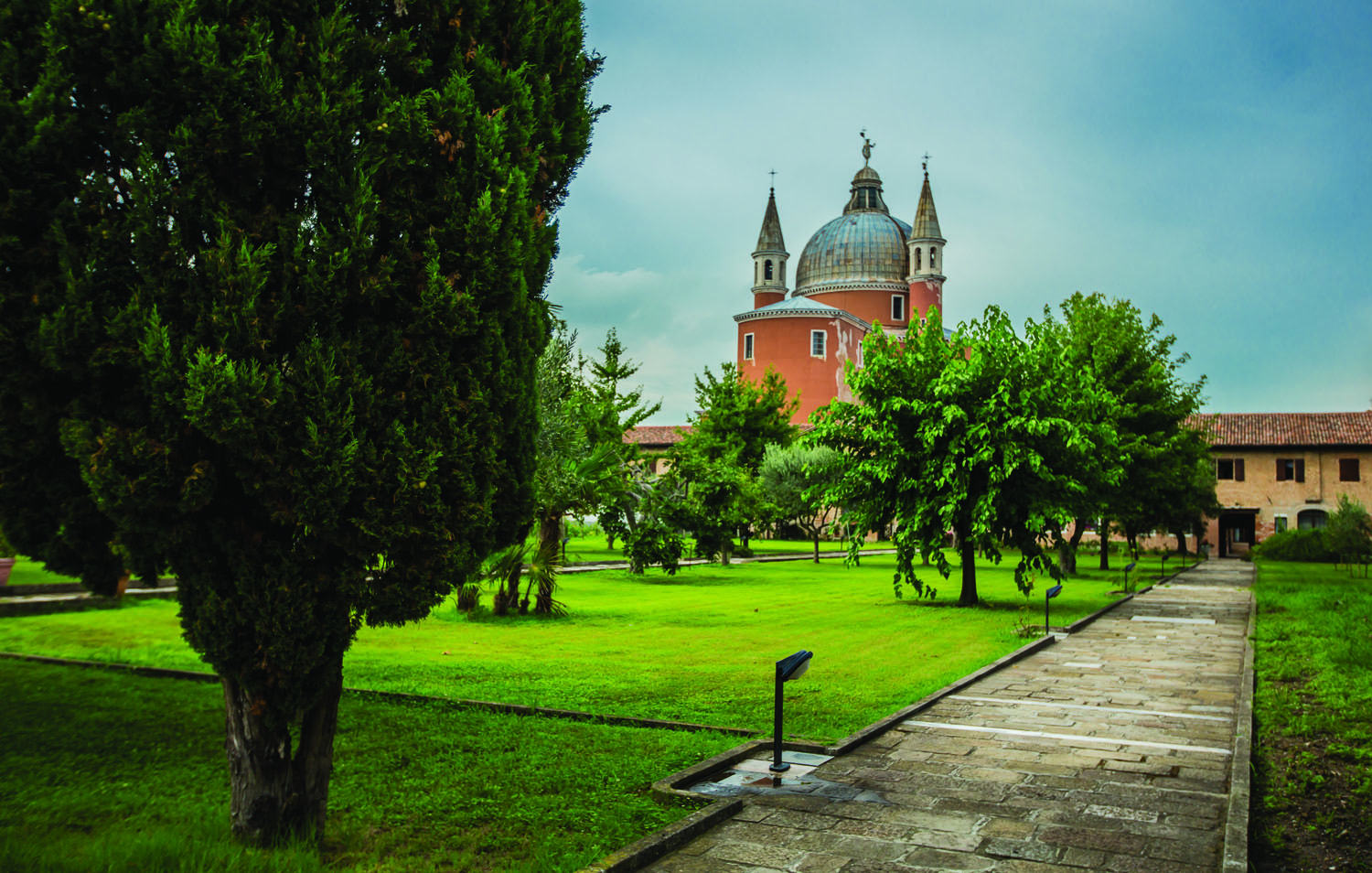
THIRD ITINERARY – A SECRET GARDEN IN VENICE
Venetian gardens are unknown to most people, even to Venetians themselves. Most of them belong to private palaces and churches and are therefore difficult to visit. They represent another of Venice’s many secrets. Thanks to Padre Agostino’s availability and kindness we visited, by appointment, the vegetable garden and orchard of the Redentore church. Here in the buildings near the garden and the church live 25 Capuchin friars. In this garden, which extends the whole width of the Giudecca island, they grow vegetables, fruit, olives and sunflowers. Peace and silence dominate here. This shady garden has a stunning view of the Lagoon and the islands of San Clemente, San Servolo and the Lido. Here is the best spot to meditate. At our wonder observing the beauty and size of the produce of the gardens Father Agostino reminded us that people are always trying to look for miracles to prove the existence of God while these miracles are just in front of our eyes. There is a small church dating back to 1536, prior to the construction of the church of Redentore, and also a tiny cemetery for the friars who used to live here. In the stunning cloister behind the church a functioning well waters the garden. After spending two years studying philosophy in Milan, the friars study theology in this peaceful place for four years. To keep them company they have chickens, hens and two cats. (The black and white cat is called Silvestro!) Satisfied with our visit and wonderful guide we leave the heavenly silentium to go back to bustle of everyday life…
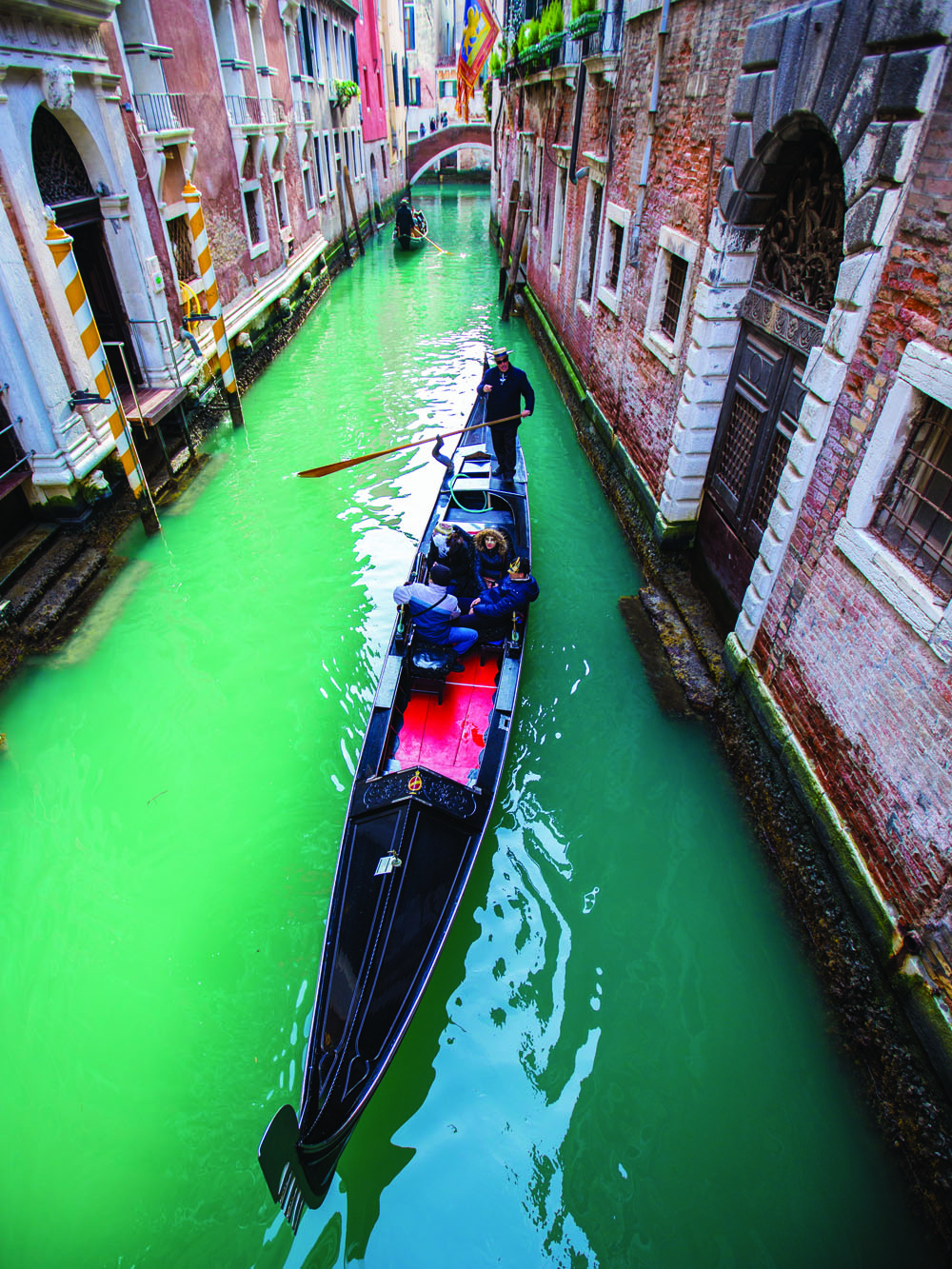 FOURTH ITINERARY – THE LIDO: AN UNDER-APPRECIATED GEM
FOURTH ITINERARY – THE LIDO: AN UNDER-APPRECIATED GEM
This is famous mainly for the Movie Festival held every year from the end of August to the first week of September when it is besieged by Hollywood. Otherwise this island is an under-appreciated treasure. The 11km-long sandbar that shelters the Lagoon from the Adriatic Sea was developed as a seaside resort at the beginning of the 20th century and became so popular with its aristocratic visitors that was commonly known as ‘the golden island’. Only 15 minutes away from St Mark’s Square, the Lido is definitely worth spending at least a day at if you are coming during spring or summer. I highly recommend you hire a bike and cycle all along the island. This narrow strip is packed with history, from the starting point of the fourth crusade to Lord Byron’s daily horse-riding expeditions. If you start from Santa Maria Elisabetta (this is where the vaporetto stops) you can cycle along its western side, which faces the Lagoon and St Mark’s until you reach the Chiesa di San Nicolò. Here you can visit the church and the pretty cloister. Then you can cycle past the Aeroporto Nicelli, an airport for smaller aircraft (where you can book a 30-minute helicopter flight over Venice). At the roundabout you should stop for a very tasty bruschetta and spritz at ‘Chiosco Bar Pedrocchi’. Refilled with energy continue your cycle ride on the eastern side of the island, which faces the Adriatic Sea with a long series of beaches.
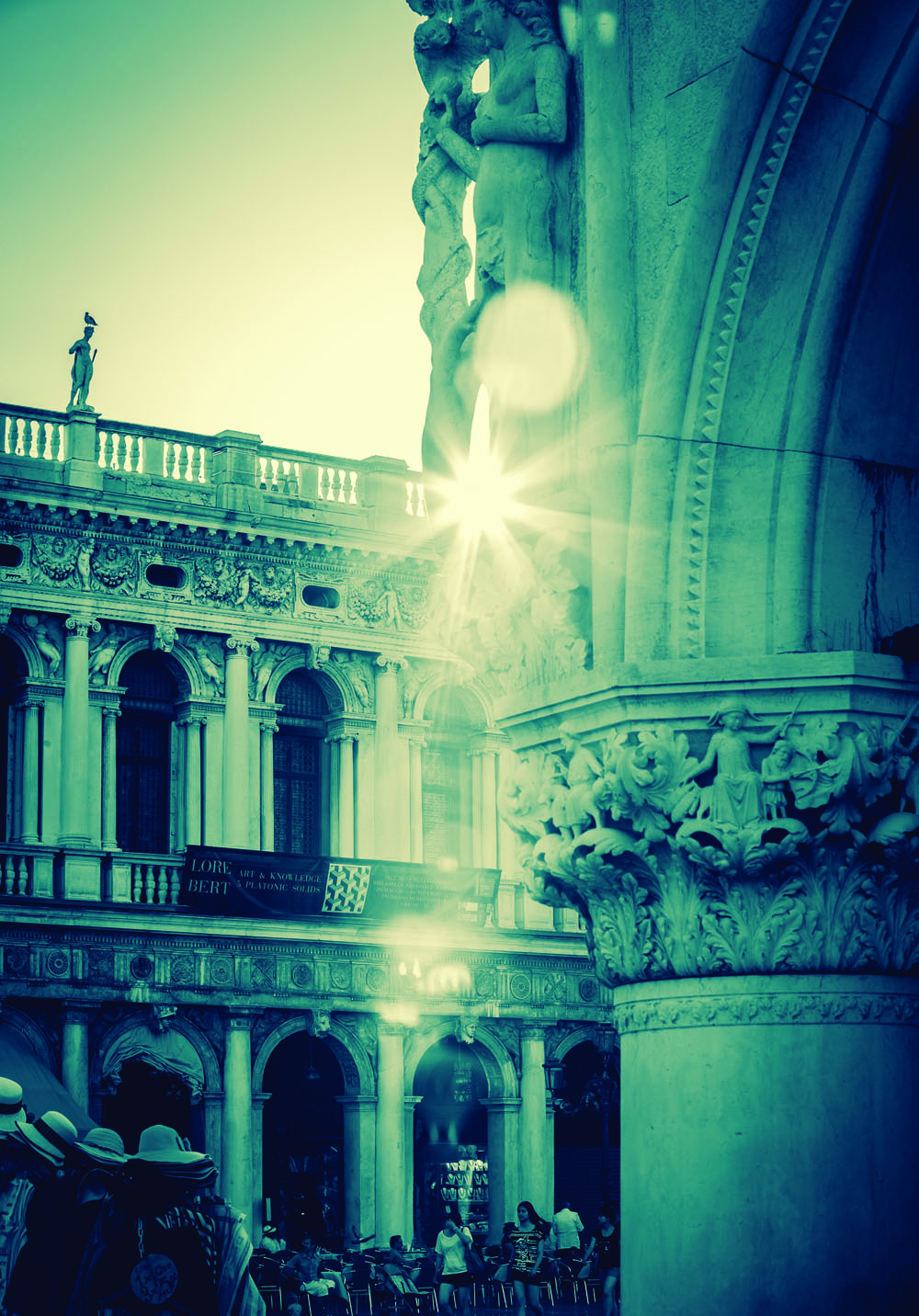 After approximately ten minutes on your right you can see the Casinò and the Palazzo del Cinema built during the 1930s. Pass the luxury Moorish-style Hotel Excelsior and at the end of Lungomare Marconi continue straight on. You might struggle on your bike for a couple of minutes here as the entrance to the Murazzi is quite sandy, but it is definitely worth it. The Murazzi is a very large dyke (approximately 5km long) built in the 18th century to protect Venice and the Lagoon from the sea. You can admire the sea while cycling on a path perfect for bikes and if you like sunbathing you can stop and tan in one of the many piers or stone blocks. Then, I recommend you to take a right turn and cycle to Malamocco, where the atmosphere is magical. In the summer, after sunbathing, I always cycle along the canal and stop just after the little bridge at ‘Trattoria Al Ponte di Borgo’ to eat a mozzarella in carrozza con acciughe (literally it means ‘mozzarella in a carriage with anchovies’) – a golden-crusted fried mozzarella sandwich filled with anchovies). That is the best way to end a day rediscovering my city.
After approximately ten minutes on your right you can see the Casinò and the Palazzo del Cinema built during the 1930s. Pass the luxury Moorish-style Hotel Excelsior and at the end of Lungomare Marconi continue straight on. You might struggle on your bike for a couple of minutes here as the entrance to the Murazzi is quite sandy, but it is definitely worth it. The Murazzi is a very large dyke (approximately 5km long) built in the 18th century to protect Venice and the Lagoon from the sea. You can admire the sea while cycling on a path perfect for bikes and if you like sunbathing you can stop and tan in one of the many piers or stone blocks. Then, I recommend you to take a right turn and cycle to Malamocco, where the atmosphere is magical. In the summer, after sunbathing, I always cycle along the canal and stop just after the little bridge at ‘Trattoria Al Ponte di Borgo’ to eat a mozzarella in carrozza con acciughe (literally it means ‘mozzarella in a carriage with anchovies’) – a golden-crusted fried mozzarella sandwich filled with anchovies). That is the best way to end a day rediscovering my city.
➤ If you would like to know more about Sara’s Venice read her blog at veneziavenexia.blogspot.com
